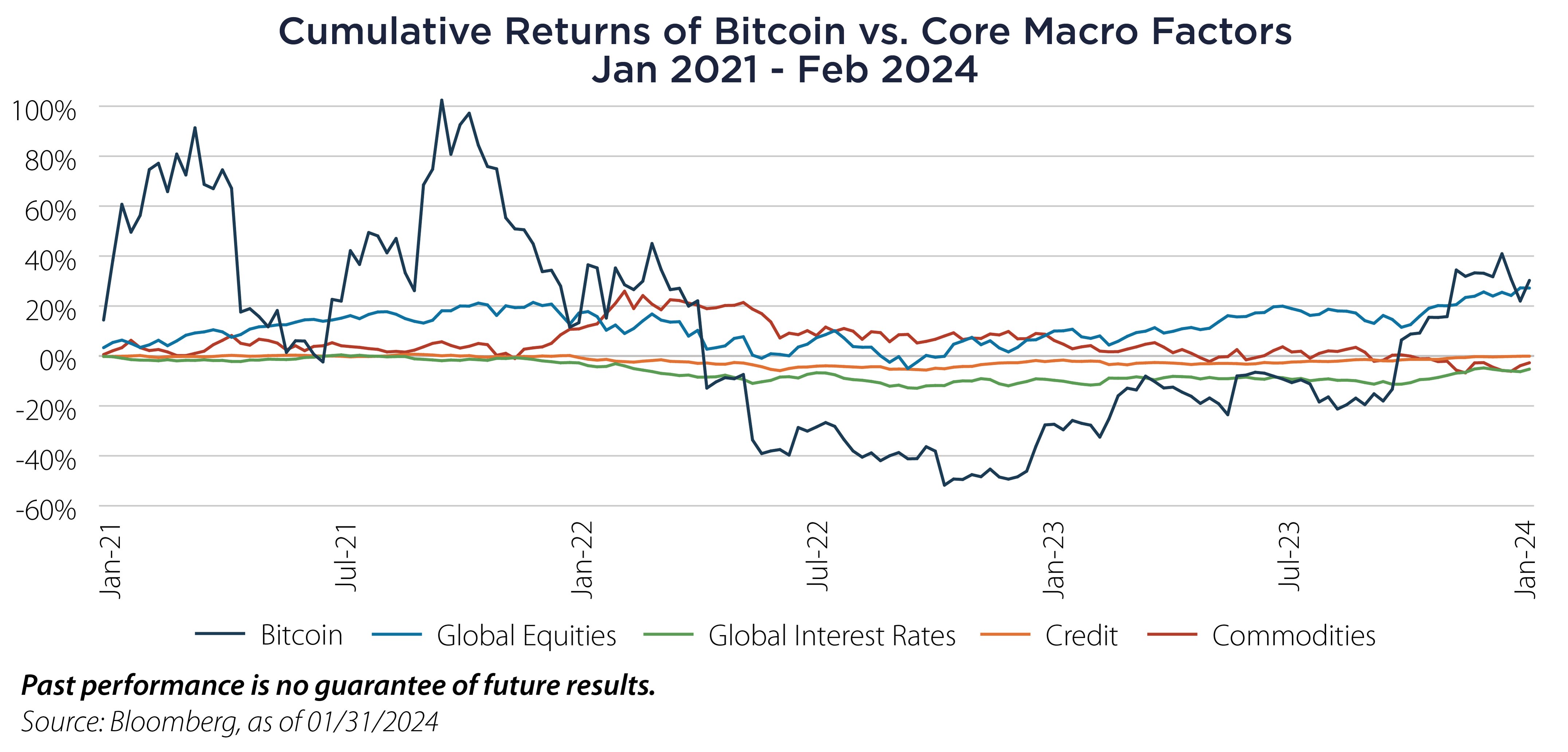The recent approval of – and record inflows into – spot Bitcoin ETFs1 has solidified cryptocurrency within the investment landscape. Naturally, questions arise regarding crypto, from clients and colleagues alike, including:
• How does crypto fit within an existing multi-asset investment framework?
• What is the appropriate allocation / sizing to crypto given its volatility?
• How can we model crypto more broadly, as it extends beyond just Bitcoin?
• Do current tools and systems handle digital assets, including non-fungible tokens (NFTs), tokens, etc.?
Here we will prime the larger discussion of evaluating crypto by empirically comparing it relative to traditional macro factors as well as fundamental ways to view other crypto assets beyond Bitcoin.
Bitcoin
Heuristically, Bitcoin has been likened to “digital gold” – a “fiat alternative” to protect against inflation and the debasing of global currencies. This makes intuitive sense, but grouping Bitcoin with gold or even currencies in general is empirically misguided.

The nearby chart regresses Bitcoin weekly returns over the past three years on four core macro factors in our proprietary multi-asset risk model to see if traditional factors “explain” Bitcoin’s return stream.2 There is a statistically significant positive relationship with Global Equities (risk-on asset), but in total less than 15% of Bitcoin’s variance is explained by these factors. Stated simply, Bitcoin’s returns have been unique and largely unrelated to traditional macro factors.
This is a compelling characteristic – idiosyncratic returns are desired for diversification purposes within an investment framework. However, these idiosyncratic returns have been notoriously volatile and cause sizing issues within a portfolio, especially using traditional construction/optimization techniques. We will be addressing these in future notes.
The Rest
Although Bitcoin is “the” cryptocurrency, the crypto ecosystem is wildly diverse (and misunderstood). This can pose even more challenges to managing risk.
A nuanced, yet simple, approach to approximating risk across the space is identifying “sectors”, or fundamental commonalities across assets, similar to traditional investment sectors. These can include currencies, protocols, stablecoins, decentralized finance (DeFi), gaming, utilities and physical infrastructure. Then, we can proxy the performance of these sectors via portfolios of the underlying assets and monitor the risk of our investments to these areas.
More to come on this as well as we refine our crypto-focused risk model.
Remarks
Although still a relatively small percentage of the overall investment landscape, for some clients crypto could be a large portion of their overall wealth. Understanding and managing crypto will become more important over time – and we are here to help.
Important Disclosures & Definitions
1 “Spot Bitcoin ETFs Attract $10B in AUM in Less Than a Month,” Zacks Fund Newsletter, 02/12/2024.
2 To reduce multicollinearity, both Credit and Commodities factors are residualized against Equities and Rates, respectively.
Decentralized Finance (DeFi): an emerging financial technology that challenges the current centralized banking system. DeFi attempts to eliminate the fees that banks and other financial service companies charge while promoting peer-to-peer transactions.
AAI000632 02/27/2025


